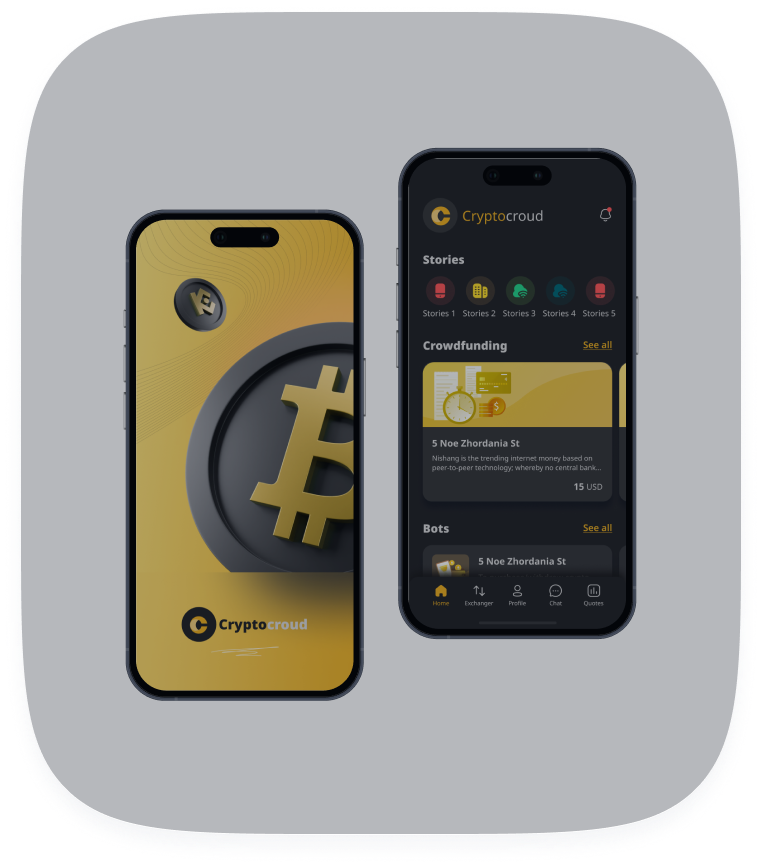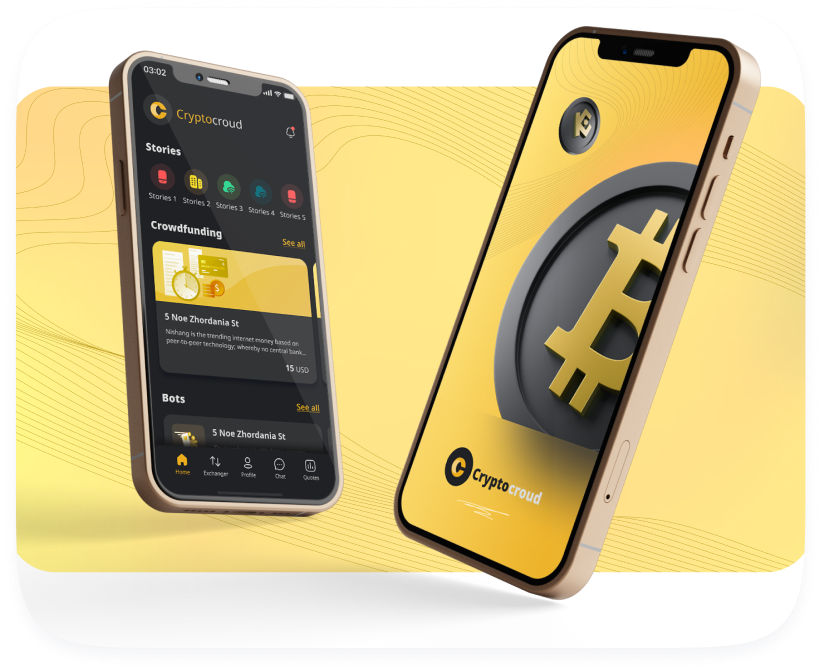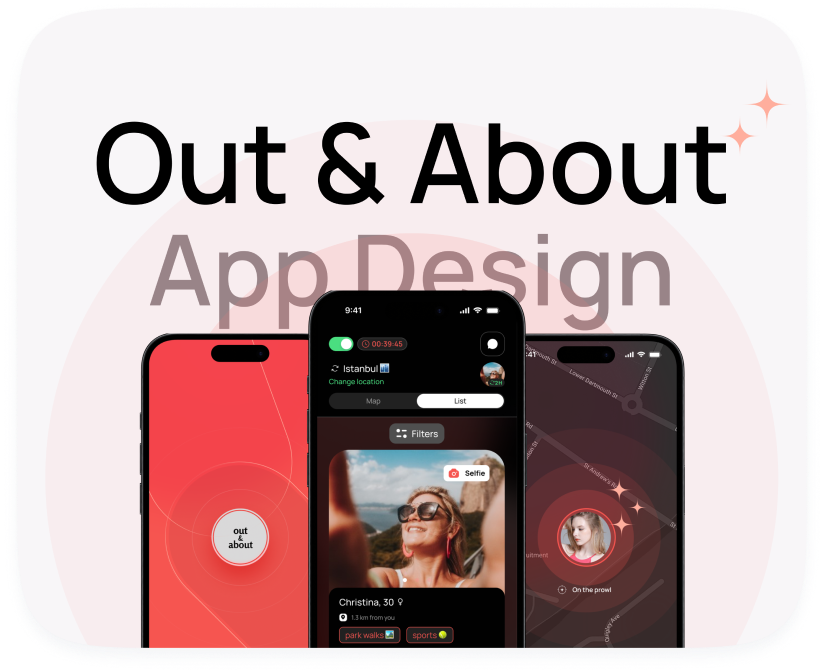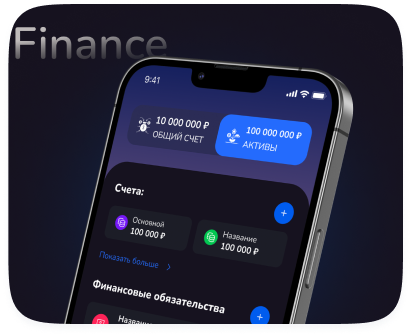
We build mobile apps





We work directly with every client
We deliver solutions with guaranteed results.

We build mobile apps






















It’s similar to buying a car at a dealership: you can go with the basic model, or choose a fully loaded version — it all depends on your needs and goals.

How to create YOUR OWN ChatGPT?

How to PROPERLY create a mobile app in 2024 | Step by step

You pay > We work > You receive the results. If you’re satisfied, you pay the next installment.
We need to have a call and discuss your specific requirements.
One thing we can say for sure: projects under 500,000 rubles are not feasible — we can’t deliver the required quality for less.
We launch, gather user feedback, and add new features that help you earn more from the app.
During development, I always design the architecture to make future updates and improvements easy and convenient.
Some apps perform better with influencer marketing, others through ad networks, and sometimes it’s even effective to buy a contact list and set up retargeting 😊
It all depends on your project’s specifics and is discussed personally.
How we can help:
- Set up ASO (App Store Optimization) and create an attractive app store page to drive free, organic installs.
- Help you develop the right promotion strategy tailored to your app.
- Share contacts of advertising experts I personally work with.
Спросить ChatGPT
The only ongoing cost is paying for the server (hosting).
You pay a subscription fee for the server. The more users your app has, the more server resources it consumes, and the higher the hosting costs.
At the early stages, when you have few users, the server will be FREE.
After that, the cost will gradually increase, but it remains affordable.
For example, an app with 100,000 users spent about $150 per month on hosting.
The Real Cost to Create an App: A Detailed Breakdown
Creating an app can seem like a straightforward process, but the actual cost involved is often far more complex than initially anticipated. This article aims to provide a comprehensive breakdown of the various factors that influence the cost to create an app, helping you understand the financial implications and plan your budget effectively.
Introduction: Unveiling the App Development Cost Enigma
In today's digital landscape, having a mobile app can significantly boost your business's reach and engagement. However, the question of "How much does it cost to create an app?" is a common and often daunting one. There's no simple answer, as the price can vary wildly based on numerous elements. This article will dissect these elements, from the initial concept to post-launch maintenance, providing a clear picture of the overall investment.
Understanding the Key Cost Drivers
Several factors contribute significantly to the final app development cost. Understanding these drivers is crucial for accurate budgeting and making informed decisions throughout the development process.
1. App Complexity and Features
The complexity of your app is arguably the most significant factor impacting the cost. Simple apps with basic functionality will naturally be less expensive than feature-rich apps with intricate user interfaces, complex data processing, and integrations with external services. Consider these aspects:
- Basic Apps: These apps typically offer simple content display, basic user authentication, and limited interactivity. Examples include simple calculators, note-taking apps, or informational guides.
- Moderate Complexity Apps: These apps involve more complex user interactions, data storage, and potentially some integration with third-party APIs. Examples include e-commerce apps with basic shopping cart functionality, social networking apps with limited features, or task management apps.
- Complex Apps: These apps often require extensive data processing, advanced user interfaces, real-time updates, complex algorithms, and seamless integration with multiple external services. Examples include ride-sharing apps, complex e-commerce platforms, or sophisticated gaming apps.
2. Platform Choice: iOS, Android, or Cross-Platform
The platform you choose to develop your app for also influences the cost to create an app. You have three primary options:
- Native iOS Development: Developing specifically for iOS devices using Swift or Objective-C.
- Native Android Development: Developing specifically for Android devices using Java or Kotlin.
- Cross-Platform Development: Developing a single codebase that can run on both iOS and Android using frameworks like React Native, Flutter, or Xamarin.
Native development generally offers better performance and access to platform-specific features but requires separate codebases for each platform, potentially doubling development costs. Cross-platform development can be more cost-effective but may come with compromises in performance or access to native features.
3. Design and User Experience (UX/UI)
A well-designed app with a user-friendly interface is crucial for user engagement and retention. Investing in professional UX/UI design is essential. The cost of design depends on:
- Number of Screens: The more screens your app has, the more design work is required.
- Complexity of Design: Custom designs with unique animations and interactions will be more expensive than using standard UI elements.
- User Research: Conducting user research to understand user needs and preferences can improve the app's usability but also adds to the cost.
4. Development Team Location and Expertise
The location and expertise of your development team significantly impact the app development cost. You can choose from:
- Freelancers: Can be a cost-effective option, but require careful vetting and management.
- Local Development Agencies: Offer higher levels of expertise and communication but typically come with a higher price tag.
- Offshore Development Teams: Can offer lower development costs, but require careful communication and project management to overcome potential language and cultural barriers.
Expert developers with experience in specific technologies or industries will command higher rates. Prioritize expertise and communication skills when choosing your development team, even if it means paying a bit more.
5. Backend Infrastructure and APIs
Many apps require a backend infrastructure to store data, manage users, and handle complex logic. The cost of the backend depends on:
- Database Size and Complexity: The larger and more complex your database, the more it will cost to maintain.
- Server Infrastructure: Cloud-based servers like AWS or Azure offer scalability and reliability but come with ongoing costs.
- API Integrations: Integrating with third-party APIs like payment gateways or social media platforms can add complexity and cost.
6. Testing and Quality Assurance (QA)
Thorough testing is essential to ensure your app is bug-free and performs reliably. The cost of testing depends on:
- Number of Test Cases: The more test cases you need to cover, the more testing will cost.
- Testing Methods: Automated testing can reduce costs in the long run, but requires initial investment.
- Device Compatibility Testing: Testing your app on a wide range of devices is crucial for ensuring a consistent user experience.
7. Post-Launch Maintenance and Support
The cost to create an app doesn't end with the launch. You'll need to budget for ongoing maintenance and support, including:
- Bug Fixes: Addressing any bugs or issues that arise after launch.
- Security Updates: Protecting your app from security vulnerabilities.
- Platform Updates: Adapting your app to new operating system versions and device features.
- New Feature Development: Adding new features to keep your app fresh and engaging.
8. Marketing and App Store Optimization (ASO)
Even the best app will fail if no one knows about it. Investing in marketing and ASO is crucial for driving downloads and user engagement. The cost of marketing can vary widely, depending on your strategy, but should be considered as a key component of the overall budget.
Cost Estimation: A Realistic Range
Given the numerous factors influencing the app development cost, providing a precise figure is impossible. However, we can offer a realistic range based on the complexity of the app:
- Simple App: $10,000 - $30,000
- Moderate Complexity App: $30,000 - $70,000
- Complex App: $70,000+ (and potentially exceeding $200,000 for highly sophisticated apps)
These are just estimates, and the actual cost could be higher or lower depending on your specific requirements and the choices you make throughout the development process.
Cost Breakdown Table
| Cost Factor | Description | Percentage of Total Cost (Approximate) |
|---|---|---|
| Planning & Discovery | Market research, requirement gathering, defining the scope. | 5-10% |
| UI/UX Design | Wireframing, prototyping, visual design, user testing. | 15-20% |
| Development (Frontend & Backend) | Coding the app's functionality and backend infrastructure. | 40-60% |
| Testing & QA | Bug fixing, performance testing, user acceptance testing. | 10-15% |
| Deployment | App store submission, server setup. | 2-5% |
| Maintenance & Support | Ongoing bug fixes, updates, security patches. | 5-10% (ongoing yearly) |
Strategies to Reduce App Development Costs
While app development can be expensive, there are several strategies you can employ to reduce costs without sacrificing quality:
- Prioritize Features: Focus on the core features that are essential for your app's success and defer less critical features to future updates.
- Choose Cross-Platform Development (Carefully): If appropriate for your app, consider cross-platform development to reduce the need for separate codebases. However, weigh the potential trade-offs in performance and native feature access.
- Use Open-Source Libraries and Frameworks: Leveraging open-source resources can save time and effort in development.
- Thorough Planning and Documentation: Clear and comprehensive planning and documentation can reduce the risk of errors and rework.
- Agile Development: Agile methodologies allow for flexibility and adaptation throughout the development process, minimizing the risk of costly mistakes.
- Test Early and Often: Catching bugs early in the development process is much cheaper than fixing them later.
- Consider an MVP (Minimum Viable Product): Launch a basic version of your app with core functionality and then add features based on user feedback.
Conclusion: Making Informed Decisions
The cost to create an app is a significant investment, and understanding the various factors involved is crucial for making informed decisions. By carefully planning your project, prioritizing features, choosing the right development team, and employing cost-saving strategies, you can create a successful app without breaking the bank. Remember that quality and user experience are paramount, so avoid cutting corners that could compromise the success of your app in the long run. Focus on providing value to your users, and the investment will pay off.






